This pad thai recipe comes from fifteen years of cooking Thai food in professional kitchens and way too many nights trying to copy that perfect Bangkok street cart flavor at home. After testing over 30 different versions and picking up tricks from Thai grandmothers at local markets, I finally figured out how to make pad thai noodles that taste just like the restaurant version. The trick is getting that sweet, sour, and salty balance right while creating what Thai cooks call "wok hei" that slightly smoky taste you get from cooking over crazy high heat.
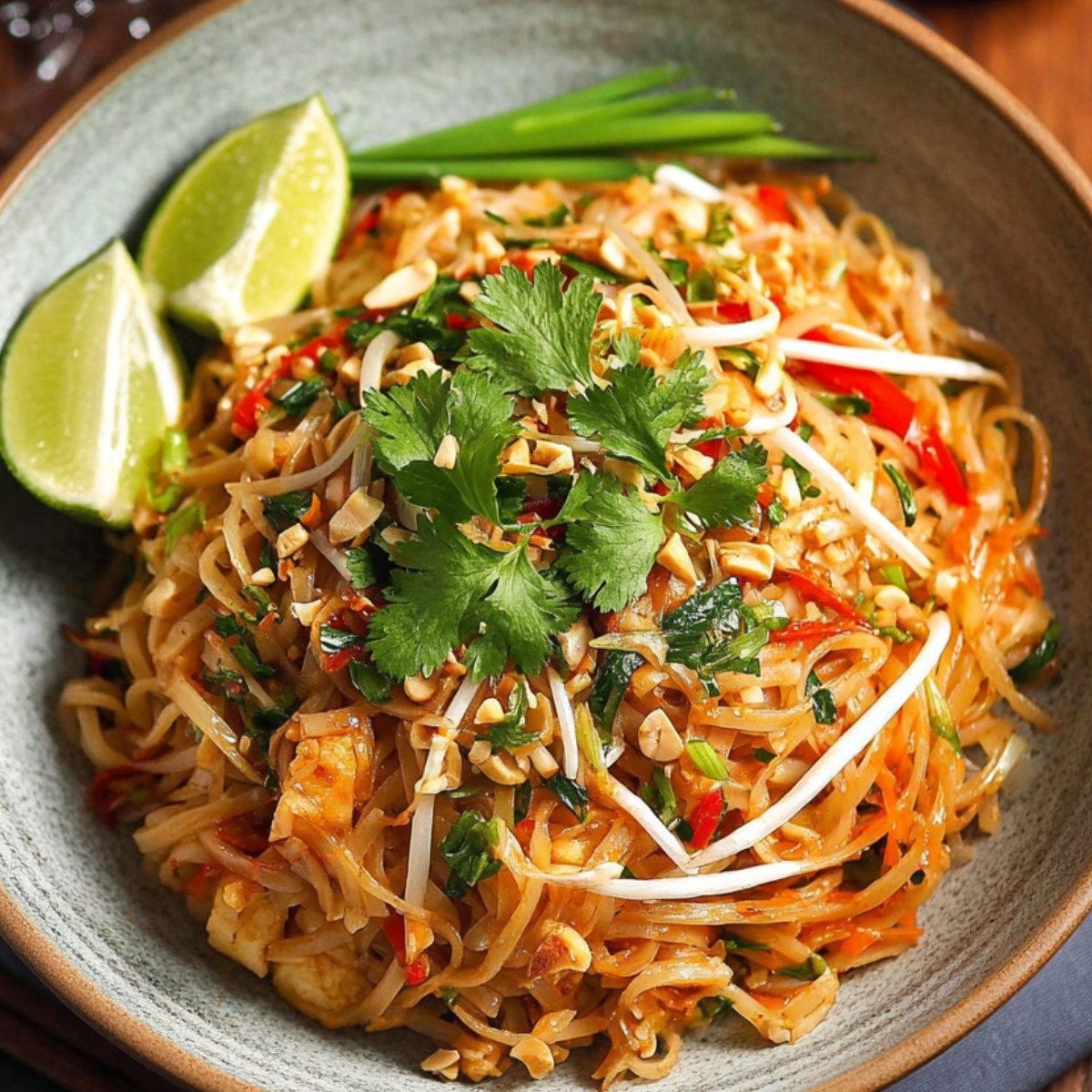
Why You'll Love This Recipe
From years of teaching this dish to families who swear they can't cook Asian food, here's why this pad thai recipe works every single time. The technique creates perfectly chewy rice noodles with that sweet and sour balance that makes you crave more after every bite. This method works whether you're making chicken pad thai for the kids or preparing multiple portions when friends come over. The sauce can be mixed ahead of time, and the whole dish comes together in just 15 minutes of actual cooking, making it perfect for those crazy weeknight dinners when you want something better than ordering takeout.
The best part? You don't need fancy equipment or hard-to-find ingredients. Everything is available at regular grocery stores, and once you get the hang of it, you'll be making this faster than waiting for delivery. Max loves helping me prep all the little bowls of ingredients, and even picky eaters who usually avoid "weird" food end up asking for seconds.
Jump to:
- Why You'll Love This Recipe
- Ingredients for Perfect Pad Thai
- How To Make Pad Thai Step By Step
- Smart Swaps for Your Pad Thai Recipe
- Popular Pad Thai Variations
- Equipment For Pad Thai
- Storing Your Pad Thai
- What to serve with pad thai
- Top Tip
- The Dish My Grandmother Taught Me to Love
- FAQ
- Time for Thai Night at Home!
- Related
- Pairing
- Pad Thai
Ingredients for Perfect Pad Thai
The Noodle Foundation:
- Rice noodles
- Fresh bean sprouts
- Green onions
- Garlic cloves
- Shallots
- Large eggs
The Sauce Mix:
- Tamarind paste
- Fish sauce
- Palm sugar
- Rice vinegar
- Soy sauce
Protein Options:
- Raw shrimp
- Chicken breast
- Extra-firm tofu
- Mix of proteins
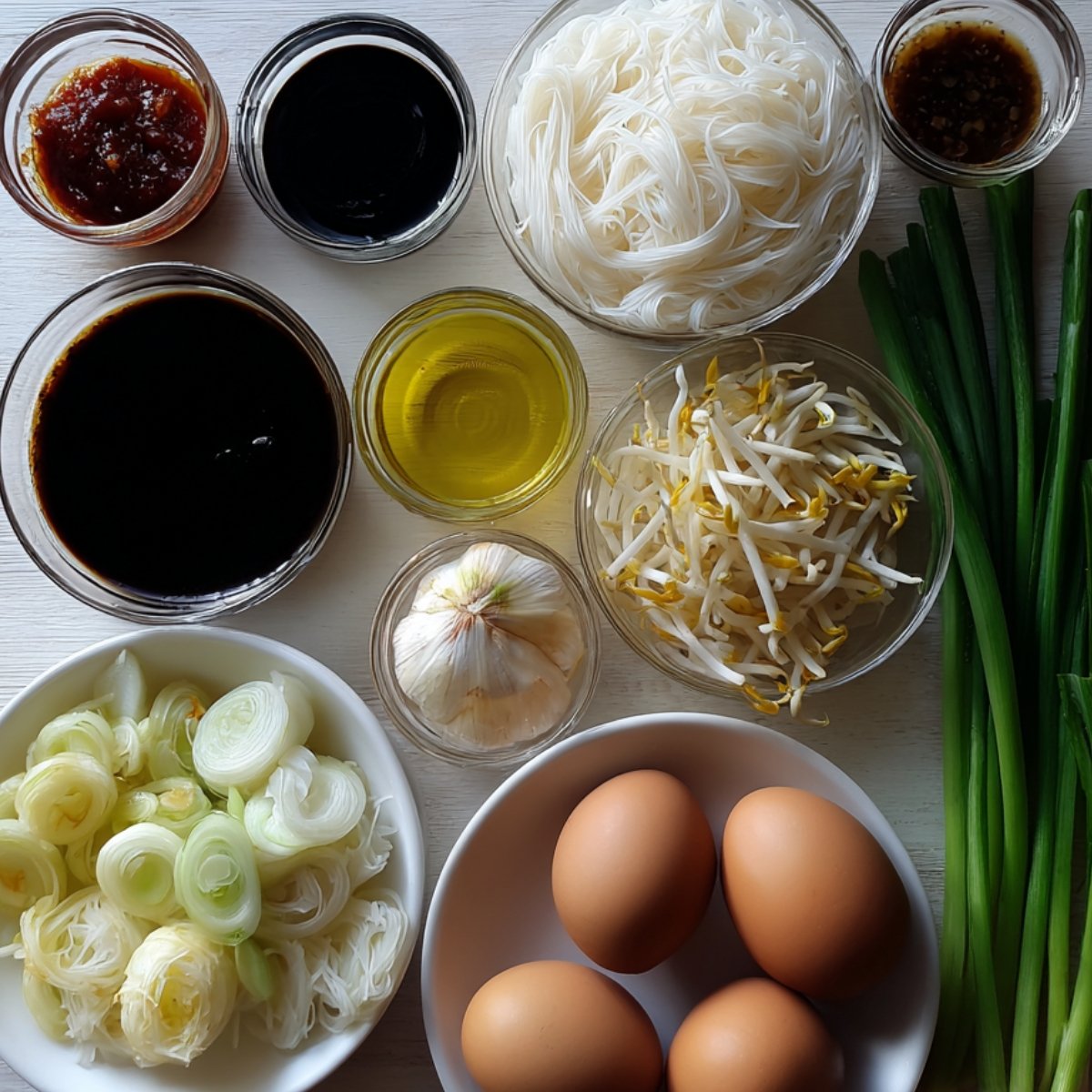
Classic Garnishes:
- Roasted peanuts
- Fresh lime wedges
- Cilantro sprigs
- Chili flakes
- Extra bean sprouts
Basic Tools:
- Large wok or wide skillet
- Two spatulas for tossing
- Small prep bowls
- Sharp knife
See recipe card for quantities.
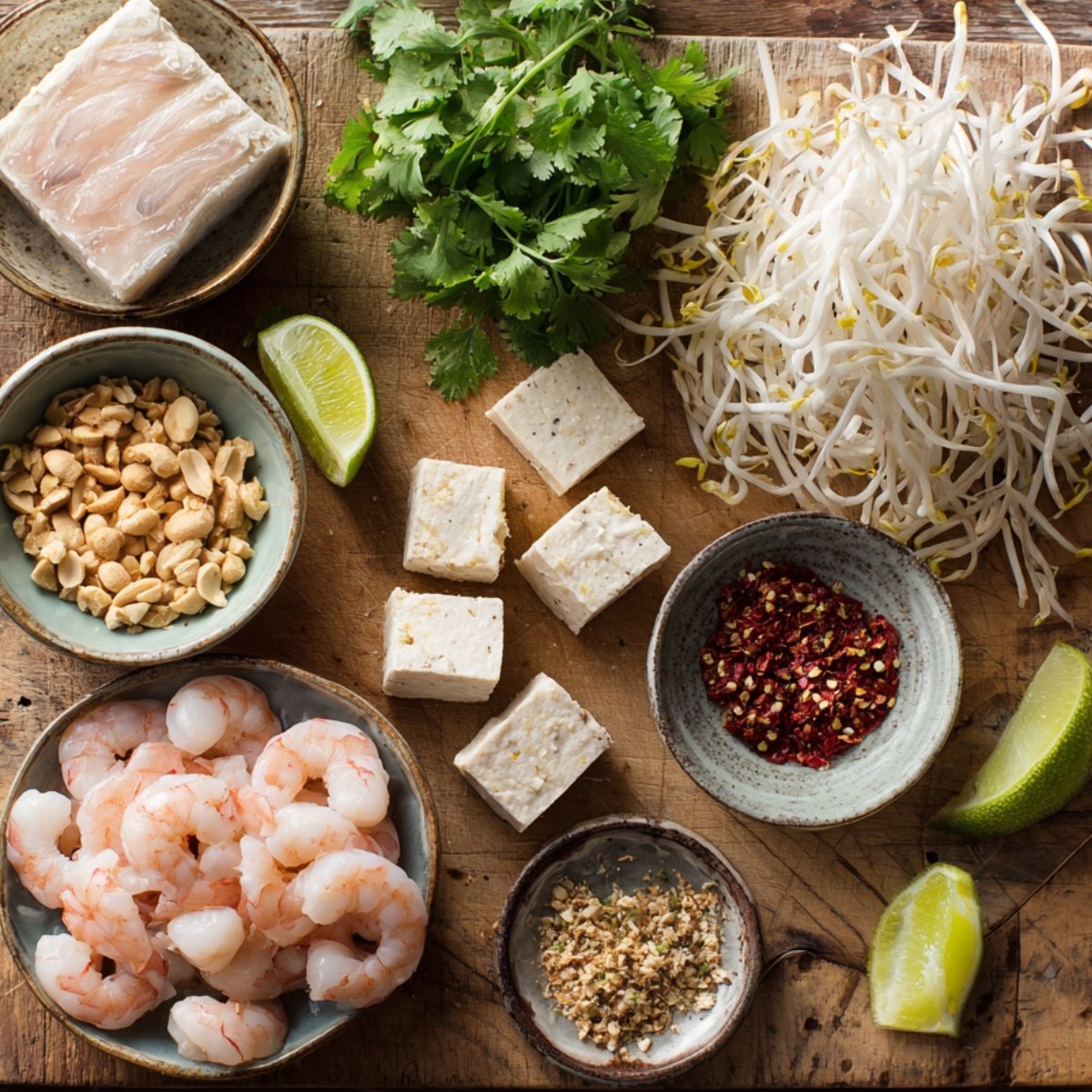
How To Make Pad Thai Step By Step
Prep Everything First:
- Soak rice noodles until bendy
- Mix all sauce ingredients in one bowl
- Chop vegetables and proteins
- Line everything up next to your stove
- Get your wok smoking hot
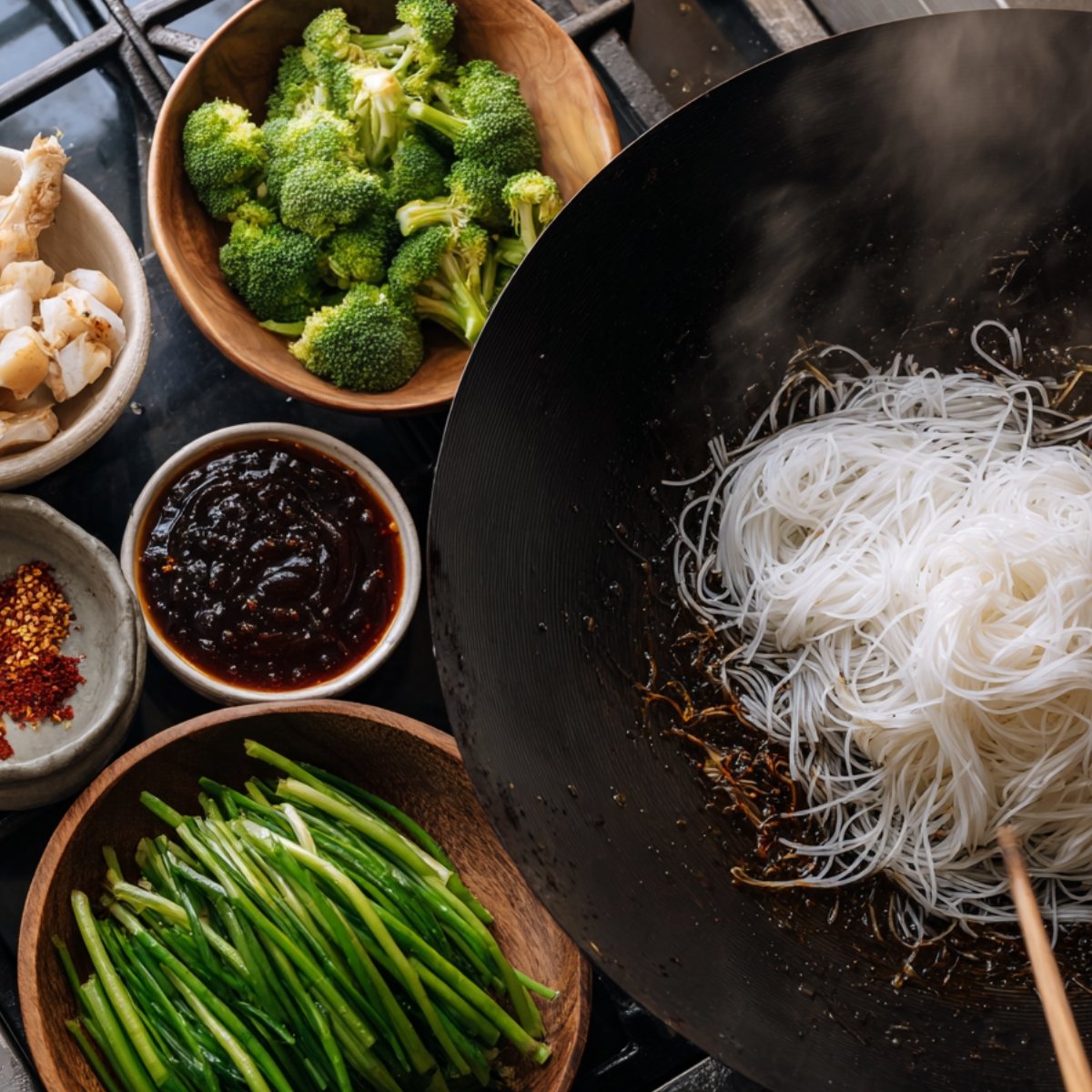
The Cooking Process:
- Cook protein first, then remove and set aside
- Scramble eggs until just barely set
- Add soaked noodles with a splash of soaking water
- Pour sauce mixture over noodles
- Keep tossing constantly for 2-3 minutes
- Add cooked protein back to wok
- Toss in bean sprouts and green onions
- One final minute of tossing
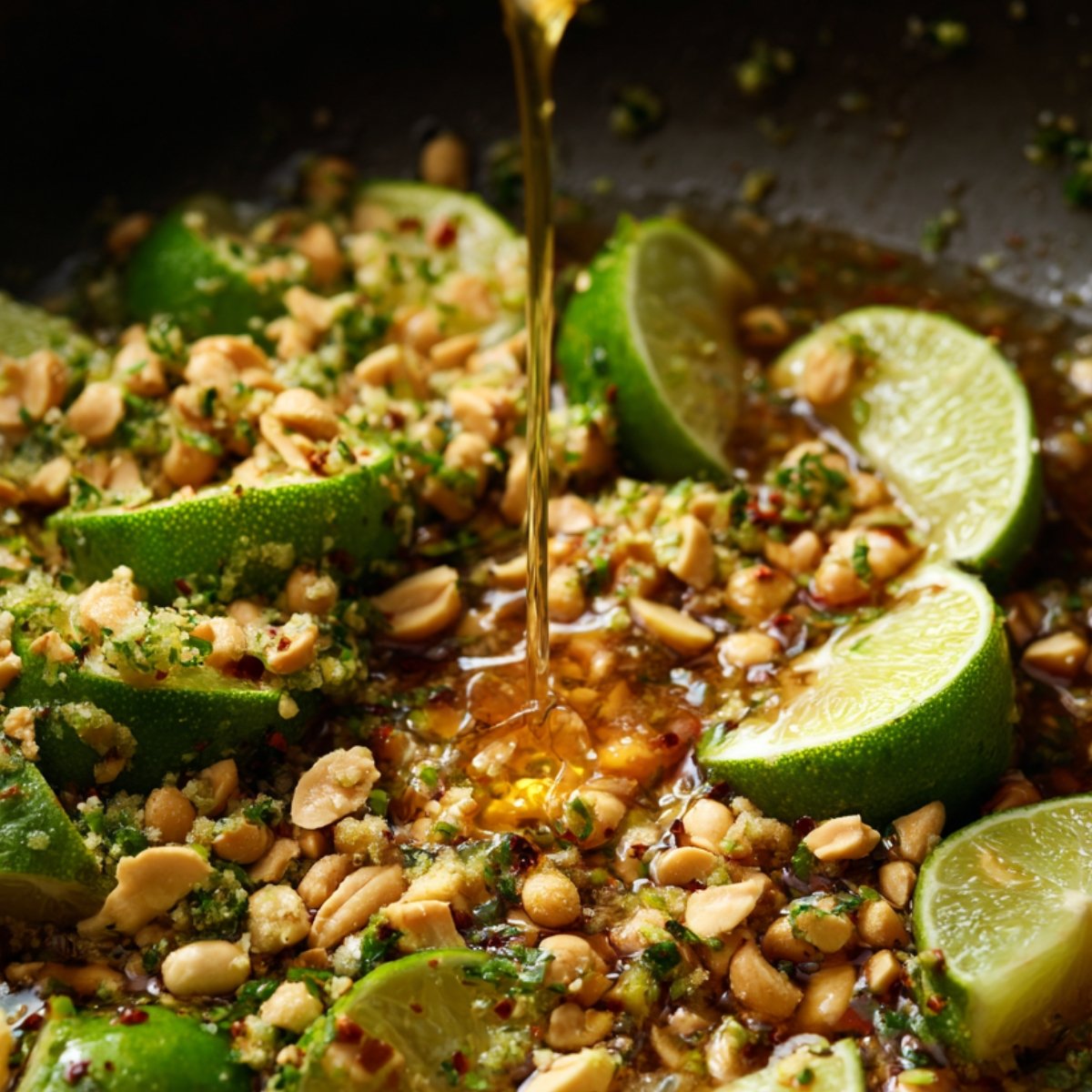
Finishing Up:
- Take off heat right away
- Squeeze fresh lime juice over everything
- Top with crushed peanuts
- Serve with lime wedges on the side
- Let people add chili flakes themselves
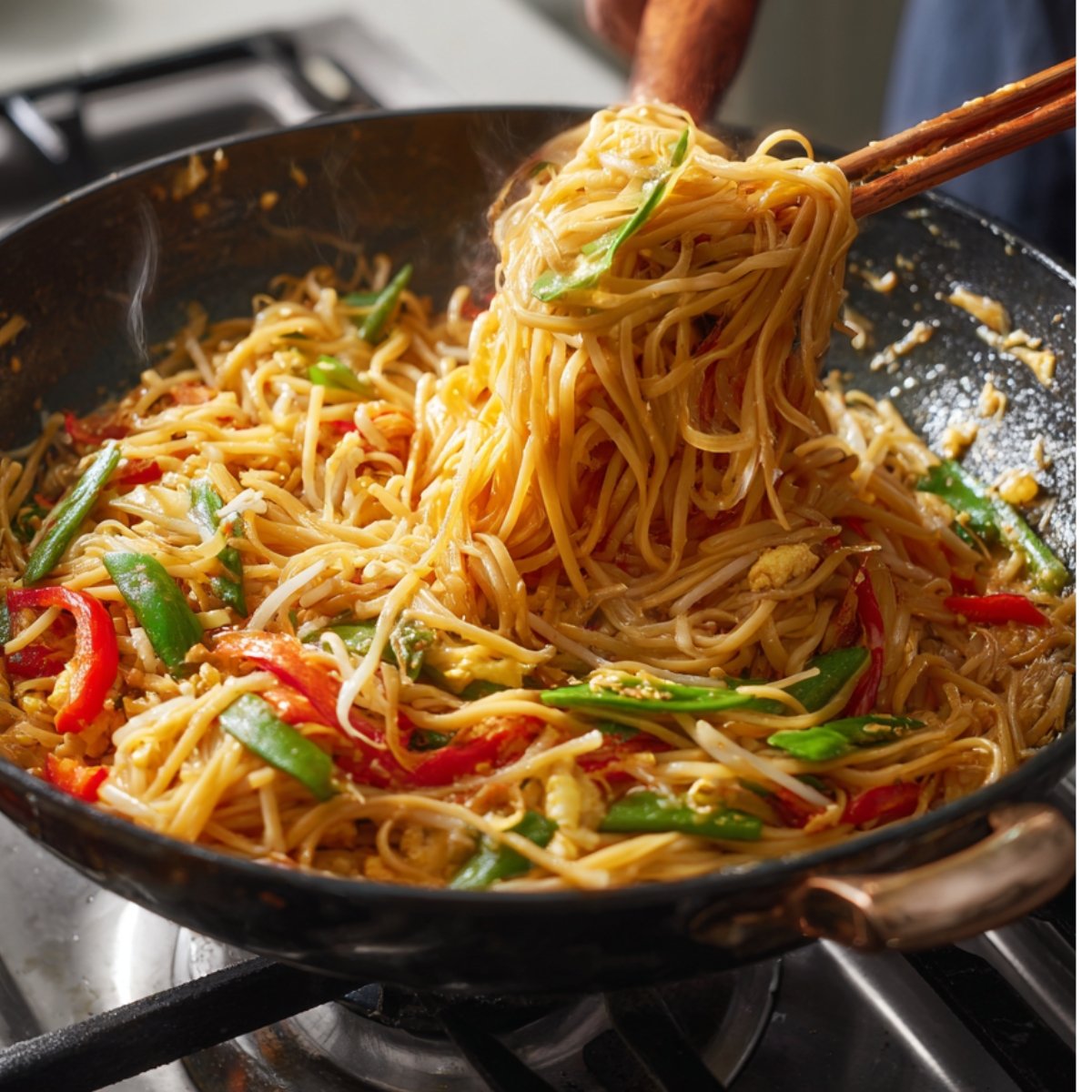
Smart Swaps for Your Pad Thai Recipe
Noodle Changes:
- Rice noodles → Shirataki noodles (for keto)
- Regular → Gluten-free rice noodles
- Pad thai width → Thin rice vermicelli
Protein Swaps:
- Shrimp → Tofu (for vegan pad thai)
- Chicken → Beef strips
- Regular → Plant-based protein
Sauce Tweaks:
- Fish sauce → Soy sauce (for vegetarians)
- Palm sugar → Brown sugar
- Tamarind → Lime juice plus rice vinegar
Dietary Changes:
- Traditional → Vegan pad thai version
- Regular → Low-sodium options
- Standard → Gluten-free pad thai
Popular Pad Thai Variations
Regional Styles:
- Bangkok street cart version with dried shrimp
- Northern Thai style with extra vegetables
- Coastal version with mixed seafood
- Vegetarian temple-style pad thai
Protein Focus:
- Shrimp pad thai with jumbo prawns
- Tofu pad thai with extra vegetables
- Mixed protein combination
- Beef pad thai with tender strips
Heat Levels:
- Mild family-friendly version
- Medium spicy pad thai
- Extra hot with fresh chilies
- Sweet version for kids
Special Occasions:
- Party-size portions in large wok
- Individual serving presentations
- Make-ahead meal prep versions
- Restaurant-style plating
Equipment For Pad Thai
- 14-inch carbon steel wok
- Long-handled spatula set
- Small prep bowls
- Fine-mesh strainer
- Sharp chef's knife
Storing Your Pad Thai
Immediate Serving (Best Option):
- Serve hot from wok
- Garnish just before eating
- Keep lime and peanuts separate
- Best texture and flavor
Short-Term Storage (Same Day):
- Cool to room temperature
- Store without garnishes
- Cover tightly
- Reheat gently in wok
Meal Prep Notes:
- Cook noodles slightly less
- Store sauce separately if possible
- Add fresh garnishes when reheating
- Best consumed within 24 hours
What to serve with pad thai
This pad thai pairs beautifully with light, fresh sides that complement its rich flavors without competing. Traditional Thai accompaniments like tom yum soup or fresh spring rolls work perfectly, while simple steamed vegetables such as broccoli or bok choy add color and nutrition to your plate. For appetizers, consider chicken satay skewers or pot stickers that guests can nibble while the main dish finishes cooking. Fresh fruit like mango or pineapple makes a refreshing finish, and Thai iced tea or jasmine tea rounds out the meal perfectly. Keep in mind that pad thai is quite filling on its own, so lighter sides work best to balance the hearty noodles.
Top Tip
- Max and I stumbled on our favorite twist to this pad thai during one of our weekend cooking adventures. While I was carefully measuring tamarind paste according to my usual recipe, Max accidentally knocked over a small bottle of sesame oil into our sauce mixture. Instead of starting over, we decided to see what happened.
- That tiny amount of sesame oil (just half a teaspoon) added an incredible nutty depth that complemented the traditional flavors perfectly. The sesame oil didn't overpower the dish but created this subtle richness that made our pad thai taste like it came from the best Thai restaurant in town. Now Max insists on adding "his special ingredient" every time we make this dish.
- Our other family secret? We lightly toast the peanuts in a dry pan for just 2 minutes before crushing them. This simple step releases their oils and creates a much more intense peanut flavor that takes the garnish from good to extraordinary. As Max says, "Toasted peanuts make everything taste like a party!"
The Dish My Grandmother Taught Me to Love
This pad thai recipe holds a special place in my heart because it reminds me of my grandmother's approach to cooking - she believed that food should bring people together and that the best meals come from understanding each ingredient's purpose. When I first started learning Thai cuisine, I was intimidated by all the different flavors and techniques, but she sat with me in her kitchen and explained how each element works together like a symphony. She taught me that cooking isn't about following rules perfectly, but about tasting as you go and adjusting until everything feels right.
FAQ
What does Pad Thai consist of?
Traditional pad thai consists of rice noodles stir-fried with a sauce made from tamarind paste, fish sauce, and palm sugar, combined with eggs, bean sprouts, and proteins like shrimp or chicken. The dish is garnished with crushed peanuts, lime wedges, and green onions, creating the perfect balance of sweet, sour, and salty flavors.
Why is Pad Thai so healthy?
Pad thai can be quite nutritious when made with quality ingredients. Rice noodles provide energy, while proteins like shrimp or tofu offer essential nutrients. Bean sprouts add vitamins and fiber, peanuts contribute healthy fats, and the minimal oil used in stir-frying keeps calories reasonable compared to heavily sauced dishes.
What does Pad Thai taste like?
Real pad thai delivers a complex flavor that balances sweet, sour, and salty elements. The tamarind paste provides tanginess, palm sugar adds sweetness, and fish sauce contributes deep umami flavor. The texture combines chewy rice noodles with crunchy bean sprouts and peanuts, creating satisfying contrast in every bite.
Is Pad Thai supposed to be spicy?
Traditional pad thai is typically mild to moderately spicy, focusing more on the sweet and sour balance than heat. The spice level comes from optional chili flakes added as garnish rather than being cooked into the dish. Many restaurants adjust spiciness based on customer preference while maintaining the dish's signature flavor profile.
Time for Thai Night at Home!
Now you have all the secrets to creating restaurant quality pad thai from proper noodle soaking to Max's sesame oil discovery. This beloved Thai street food proves that with the right technique, you can bring the flavors of Bangkok directly to your kitchen.
Craving more crowd-pleasing favorites? Satisfy your sweet tooth with our Easy Gulab Jamun Recipe that melts in your mouth with every bite. For chocolate lovers, try The Best Lava Cake Recipe that creates that perfect molten center every time. Need a fresh appetizer? Our Delicious Peach Bruschetta Recipe combines sweet and savory flavors that guests always rave about!
Share your pad thai success! We love seeing your colorful creations!
Rate this recipe and join our cooking community!
Related
Looking for other recipes like this? Try these:
Pairing
These are my favorite dishes to serve with pad thai

Pad Thai
Ingredients
Equipment
Method
- Soak rice noodles in warm water until soft but slightly firm; drain and set aside.
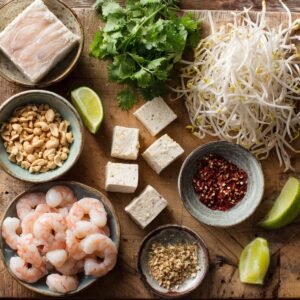
- In a bowl, whisk together tamarind paste, fish sauce, palm sugar, vinegar, and soy sauce.

- In a hot wok, stir-fry your protein (shrimp, chicken, or tofu) until fully cooked, then remove.
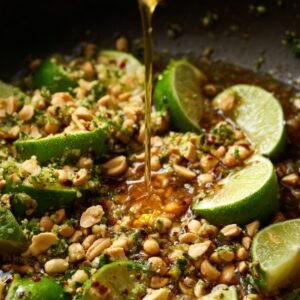
- Add eggs, scramble briefly, then add noodles and sauce. Toss for 2-3 minutes until evenly coated.

- Add bean sprouts, green onions, and cooked protein. Toss briefly, then garnish and serve with lime.
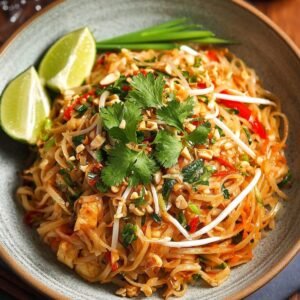


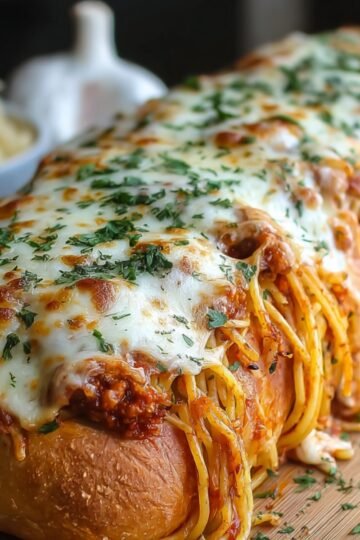
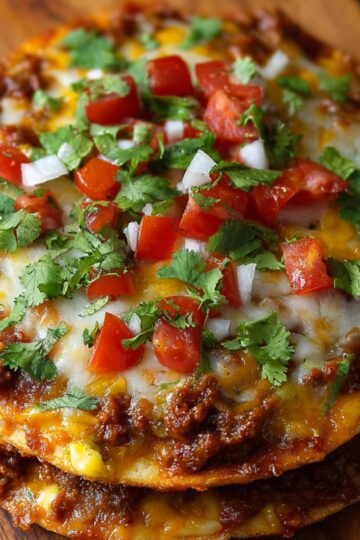
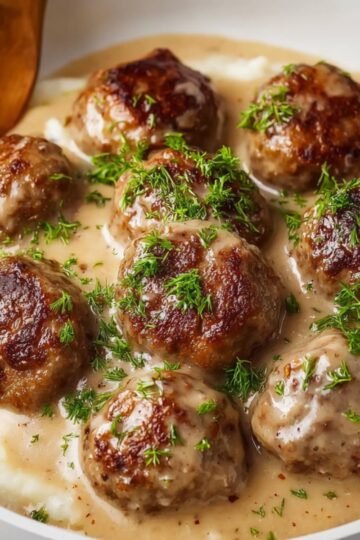
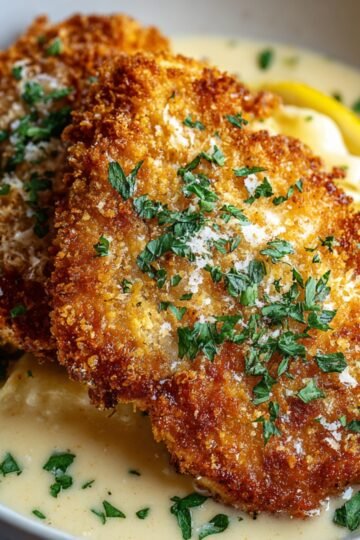
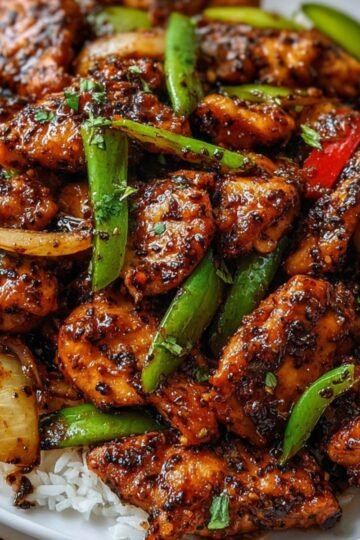
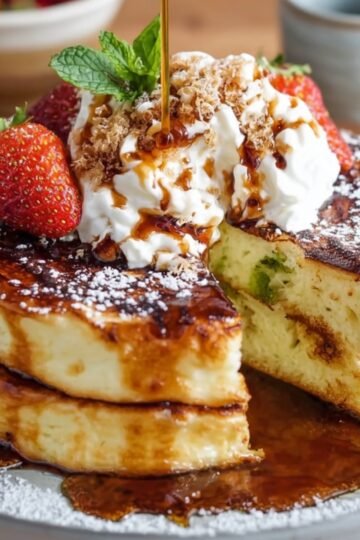

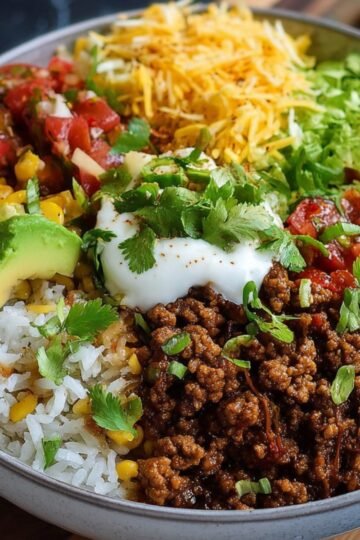
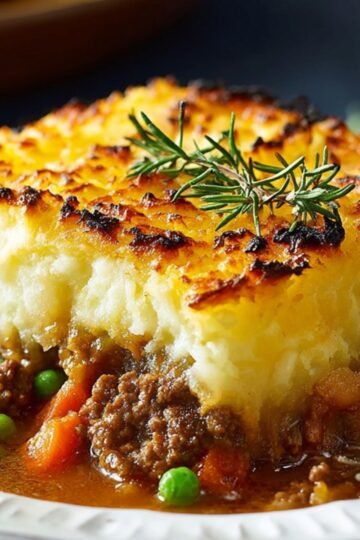
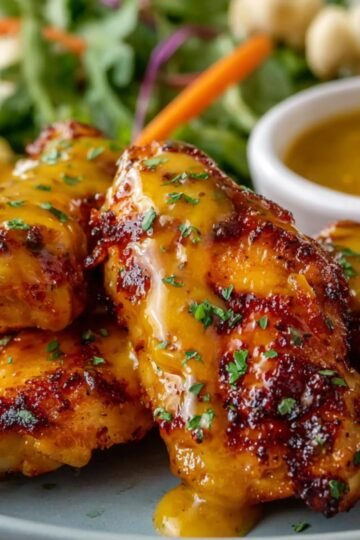

Leave a Reply